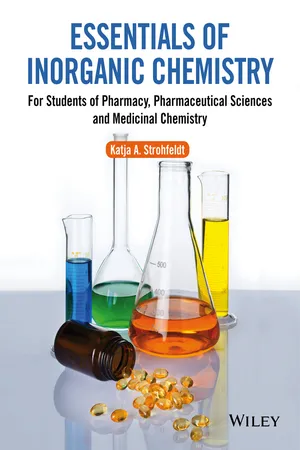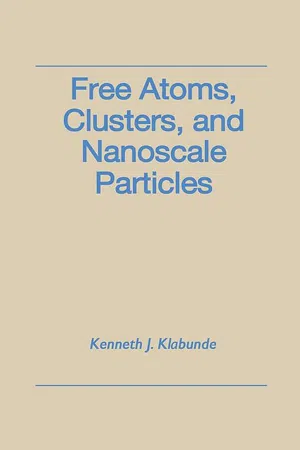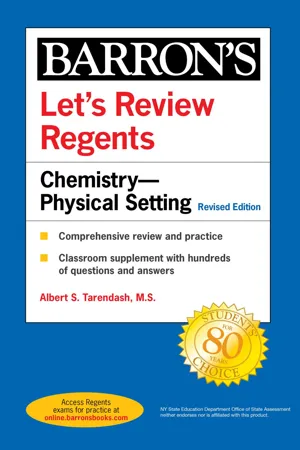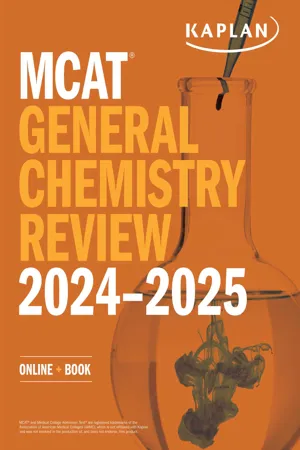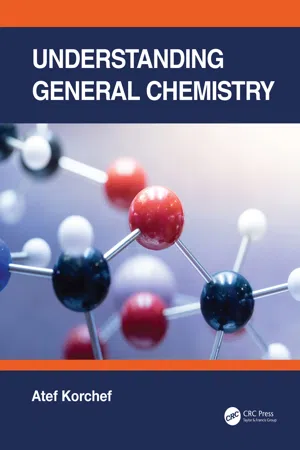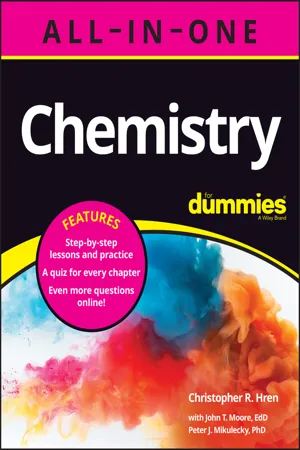Chemistry
Group 4A
Group 4A refers to the elements in Group 14 of the periodic table, including carbon, silicon, germanium, tin, and lead. These elements share similar chemical properties, such as forming covalent compounds and exhibiting multiple oxidation states. They are important in various industrial applications, as well as in the fields of electronics, materials science, and environmental chemistry.
Written by Perlego with AI-assistance
Related key terms
Related key terms
1 of 4
Related key terms
1 of 3
7 Key excerpts on "Group 4A"
- eBook - ePub
Essentials of Inorganic Chemistry
For Students of Pharmacy, Pharmaceutical Sciences and Medicinal Chemistry
- Katja A. Strohfeldt(Author)
- 2015(Publication Date)
- Wiley(Publisher)
Chapter 5 The Carbon GroupMembers of group 14 of the periodic table (14th vertical column) are summarised as carbon group consisting of carbon (C), silicon (Si), germanium (Ge), tin (Sn) and lead (Pb) (Figure 5.1 ).Periodic table of elements; group 14 elements are highlightedFigure 5.1Group 14 elements have four valence shell electrons and therefore tend to form covalent compounds. Nevertheless, with increasing mass and atomic radius, the elements show increasingly more metallic characteristics and have lower melting and boiling points. Elements within this group show a graduation from nonmetallic elements (C) to elements that are classified as metals (Pb). Silicon is generally seen as nonmetallic, whereas germanium is metallic. Nevertheless, this classification is not definite. Silicon and germanium both form covalent diamond-type structures in the solid state, but their electrical behaviour indicates more a metallic behaviour. Therefore, silicon and germanium are classified as metalloids (see Chapter 4).Carbon is the essential element to life on earth, and the chemistry related to carbon is classified as organic chemistry and we will therefore not discuss it any further in this book. Organometallic chemistry relates to the interaction of carbon compounds with metals, and the basic concepts will be discussed in Chapter 8.Tin and lead have been under investigation for use as anticancer and antimicrobial agents, but so far with limited success. This chapter will discuss the pharmaceutical applications of silicon- and germanium-based drugs.5.1 General chemistry of group 14 elements
5.1.1 Occurrence, extraction and use of group 14 elements
Silicon is, after oxygen, the second most abundant element in the earth's crust. It occurs in a range of minerals and sand (SiO2 , quartz). In contrast, germanium, tin and lead are relatively rare elements, with tin and lead being extracted for thousands of years from their ores. The main source for tin is cassiterite (SnO2 - eBook - ePub
- Kenneth J. Klabunde(Author)
- 2012(Publication Date)
- Academic Press(Publisher)
Chapter 8Carbon Group (Group 14)
I Carbon Group Atoms Vapors (C Si, Ge, Sn, Pb)
A Occurrence and Techniques
The vapors of these elements are intriguing, particularly carbon, where C1 , C2 , C3 , C4 , and C5 are all prevalent.1 Carbon as C1 , C2 , and C3 is important in astronomy as well as flames, and much of the original literature was reviewed earlier.1 As a brief summary, carbon has been vaporized (sublimed) in many ways including e -beam, laser, resistive heating, and the carbon arc. Very high temperatures are required and the ratios of C1 , C2 , C3 , C4 , and C5 can vary depending on the method used. However, C3 is generally the predominant species. Discussion of more recent innovations are given in Section IIA.Silicon behaves more like a metal during vaporization. It melts first, but unfortunately the melt is very corrosive and so e -beam methods are usually preferrable, although Knudsen cell, resistive heating and arc vaporizations have also been reported. The vapor composition is primarily Si atoms.Germanium, tin, and lead are relatively easy to vaporize and resistive heating from W–Al2 O3 crucibles works well. Monatomic species make up the vapor.B Physical Properties and Theoretical Studies
Collision quenching of electronically excited carbon atoms has been studied by Husain and Newton.2 They studied the 1 So(2p 2 ) state, which is 2.684 eve, above the triplet 3 Po state. Quenching by a variety of gases (He, H2 , N2 , Cl2 , CO, H2 O, CH4 , etc.) allowed comparisons of C(21 So) and Si(31 So) quenching absolute rate constants. Water and alkenes were among the most effective quenchers.C Chemistry
1 Abstraction, Insertion, and Addition Processes of Atoms
In earlier years a wealth of new chemistry resulted from the study of carbon atom abstraction of oxygen, hydrogen, halogen, etc.1 Recent work has dealt more with detailed mechanistic evaluations. For example, the mechanism of oxygen abstraction from THF by carbon atoms has been evaluated by ab initio theoretical methods.3 These calculations revealed a low-energy concerted pathway for three-bond cleavage to give the three product molecules directly. Thus, a biradical intermediate may not be involved in this interesting reaction, as was postulated earlier.4 - eBook - ePub
- Allen J. Bard, Roger Parsons, Joseph Jordan(Authors)
- 2017(Publication Date)
- CRC Press(Publisher)
8Carbon, Silicon, Germanium, Tin, and Lead * ZBIGNIEW GALUS University of Warsaw, Warsaw, PolandThe elements of this group show greater diversity of properties than do elements in groups distant from the center of the periodic table. For instance, carbon is nonmetal and lead is a typical metal, while silicon and germanium exhibit semiconducting properties.Compounds with hydrogen are stable and common for carbon, but the number of such compounds for silicon and germanium becomes limited, and for lead, only one unstable compound of that type is known. The chemistry of the divalent state is more important for heavier elements and the basicity of oxides increases from carbon to lead.I. Carbon
A. Oxidation States
Carbon forms a great number of compounds with different oxidation states. The +4 state is characteristic for carbon in CO2 and carbonates, while −4 formally may be ascribed to carbon in various hydrocarbons such as CH4 . Intermediate oxidation numbers may be formally calculated for such stable compounds as CH3 OH, HCOH, and HCOOH.The characteristic feature of carbon is significant stability in both the +4 and −4 valence state compounds. Only the potentials of those compounds of carbon that are traditionally grouped with inorganic substances are considered here. As a rule the electrode reactions of these compounds are highly irreversible and therefore all available potentials are calculated on the basis of thermodynamic data. In the case of organic carbon compounds there are systems that exhibit reversible behavior, and their potentials are measured with good accuracy. One such system is the quinone-hydroquinone couple, sometimes used as a pH indicator.All calculated potentials of the carbon-containing redox couples are given by Latimer [1 ] and Pourbaix [2 ]. Some of the Latimer data were recalculated later by de Béthune and Swendeman Loud [3 ]. Thermodynamic data used in these sometimes modified calculations are given in Table 1 - Albert S. Tarendash(Author)
- 2021(Publication Date)
- Barrons Educational Services(Publisher)
Group 1 elements form 1+ ions. Because they are highly reactive, they do not occur as free elements in nature and must be prepared by passing an electric current through their molten compounds. We will discuss this technique in Chapter 15. Hydrogen (H) is not considered an alkali metal because its properties are not similar to those of the other elements in Group 1. This exception is due to the small size of the hydrogen atom and the large attraction of the nucleus for the single electron. Hydrogen is associated with Group 1 because it has one valence electron. Group 2 The elements in Group 2 are known as the alkaline earth metals. (Each element has two valence electrons.) An alkaline earth metal has less metallic character than the alkali metal that precedes it. The elements of Group 2 form 2+ ions, although beryllium (Be), which is relatively small, is known to form covalent bonds (see Chapter 10) with elements such as chlorine (Cl, in BeCl 2). The alkaline earth metals are reactive and do not occur as free elements in nature. Group 13 Each element in Group 13 has three valence electrons. The first element of this group, boron (B), is a metalloid. Because of its small size, it does not form a 3+ ion readily, as do the other elements in this group. Group 14 Each element in Group 14 has four valence electrons. Carbon (C) is a nonmetal that occurs in two distinct crystalline forms: graphite and diamond. (These forms are known as allotropes.) Silicon (Si) and germanium (Ge) are metalloids that are used widely in the computer industry. Tin (Sn) and lead (Pb) are typical metallic substances. Group 15 Each element in Group 15 has five valence electrons. Nitrogen (N), the first member of the group, exists in nature as N 2, a diatomic molecule with a triple bond (see Chapter 10). The relative inactivity of nitrogen gas in the atmosphere is due to the fact that considerable energy is needed to break the triple bond. Nitrogen is nonmetallic- No longer available |Learn more
MCAT General Chemistry Review 2024-2025
Online + Book
- (Author)
- 2023(Publication Date)
- Kaplan Test Prep(Publisher)
valence electrons, are the farthest from the nucleus and have the greatest amount of potential energy. Their higher potential energy and the fact that they are held less tightly by the nucleus allows them to become involved in chemical bonds with the valence electrons of other atoms; thus, the valence shell electrons largely determine the chemical reactivity and properties of the element.MCAT EXPERTISE
Relating valence electrons to reactivity is important. Elements with similar valence electron configurations generally behave in similar ways, as long as they are the same type (metal, nonmetal, or metalloid).The Roman numeral above each group represents the number of valence electrons elements in that group have in their neutral state. The Roman numeral is combined with the letter A or B to separate the elements into two larger classes. The A elements are known as the representative elements and include groups IA through VIIIA. The elements in these groups have their valence electrons in the orbitals of either s or p subshells. The B elements are known as the nonrepresentative elements and include both the transition elements, which have valence electrons in the s and d subshells, and the lanthanide and actinide series, which have valence electrons in the s and f subshells. For the representative elements, the Roman numeral and the letter designation determine the electron configuration. For example, an element in Group VA has five valence electrons with the configuration s2 p3 . As described in Chapter 1 of MCAT General Chemistry Review, the nonrepresentative elements may have unexpected electron configurations, such as chromium (4s1 3d5 ) and copper (4s1 3d10 - eBook - ePub
- Atef Korchef(Author)
- 2022(Publication Date)
- CRC Press(Publisher)
2 ). Alkaline earth metals include, among others, beryllium (Be), magnesium (Mg) and calcium (Ca).7.3.3 Transition Metals
Transition metals are elements where the atom has an incomplete d subshell, or which can give rise to cations with an incomplete d subshell. Transition metals are found from Group 3 to Group 12 in the periodic table of elements. They include iron (Fe), copper (Cu), nickel (Ni), gold (Au) and cobalt (Co), among others. They are good conductors of heat and electricity. They can lose many electrons when they form bonds with other atoms. Many transition metals combine chemically with oxygen to form oxides.7.3.4 Halogen Family
Halogens are found in Group 17. Halogens are fluorine (F), chlorine (Cl), bromine (Br), iodine (I), astatine (At) and tennessine (Ts). Halogens present a valence shell (ns np) and have seven valence electrons (ns2 np5 ). They require only one additional electron to form a full octet. This characteristic makes them more reactive than other non-metal groups. The name “halogen” means “salt-producing”. Indeed, when halogens react with metals, they form many salts such as NaCl, KBr, CaF and KI.7.3.5 Noble Gases
The last group of the periodic table of elements (group 18) is the group of noble gases, which are helium (He), neon (Ne), argon (Ar), krypton (Kr), xenon (Xe), radon (Ra) and oganesson (Og). Noble gases present a valence shell (ns np) and have eight valence electrons, except for He which shows the valence shell electrons 1s2 . Thus, their valence shell is completely filled (ns2 np6 or 1s2 for He). For this reason, they are inactive and because they do not readily combine with other elements to form compounds, the noble gases are also called inert gases.7.3.6 Lanthanides and actinides
Rare earth elements referred to as the lanthanide series are a group of 15 elements, from lanthanide (La; atomic number 57) to lutetium (Lu; atomic number 71), plus scandium and yttrium which exhibit similar properties to the lanthanides. They fill their 4f sublevel progressively. - Christopher R. Hren, John T. Moore, Peter J. Mikulecky(Authors)
- 2022(Publication Date)
- For Dummies(Publisher)
The Roman numeral indicates the valence number of each element family. In addition, most Group B metals, the transition metals, are said to have two valence electrons (with minor exceptions — which you can completely ignore — due to unpredictable electron filling due to stability reasons). Figure 6-4 shows this broken down by column in the periodic table. It is a good general reference to use; however, there are a few exceptions. Outside of the transition metals and the rare exception as mentioned above, the other major exception to this is the element helium. Helium is listed on the periodic table in group VIIIA, indicating it should have 8 valence electrons like all of the other noble gases but in reality it only has 2 valence electrons. This does make sense when you consider that helium only has 2 electrons and both of those electrons are found in the 1s orbital. FIGURE 6-4: Number of valence electrons for each family on the periodic table. Atoms are most stable when their valence shells are completely filled with electrons. Chemistry happens because atoms attempt to fill the valence shells. Alkali metals in Group IA of the periodic table are so reactive because they need only to give up one electron to have a completely filled valence shell. Halogens in Group VIIA are so reactive because they need only to acquire one electron to have a completely filled valence shell. The elements within a group tend to have the same number of valence electrons and for that reason tend to have similar chemical properties. Elements in Groups IA and IIA tend to react strongly with elements in Group VIIA. Group B elements tend to react less strongly. Q. How many valence electrons do the following elements have? Carbon Hydrogen Neon Iron A. Use the elements location on the periodic table to determine the number of valence electrons. If the elements are in the A group then the Roman numeral abbreviation is equal to the number of valence electrons
Index pages curate the most relevant extracts from our library of academic textbooks. They’ve been created using an in-house natural language model (NLM), each adding context and meaning to key research topics.
Explore more topic indexes
Explore more topic indexes
1 of 6
Explore more topic indexes
1 of 4
